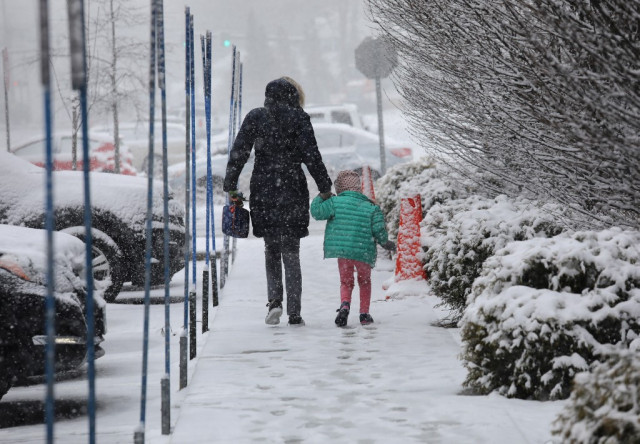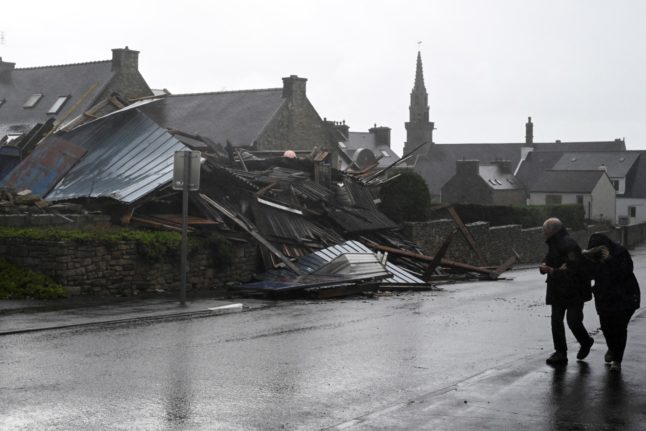From the start of this school year, it will be compulsory for children living in France to be in education from the age of three.
But what if your children are under three years old? What types of daycare exists in France for infants and pre-kindergarten years?
Here’s our guide to all types of childcare for children under three years old available in France.

Let’s start with the most common one, the crèche.
Known as daycare centres in English, there are various types of them in France and can be either public or private.
The costs of all public daycares are calculated per family income according to a scale established by the CNAF (Caisse Nationale des Allocations Familiales) (branch of the French social security that oversees family subsidies). Daycare is paid monthly.
-
Community daycare (crèche associatives)
Run by early childcare professionals, these daycares are subsided by local authorities and the CAF (the government body that helps families by offering different services and benefits which start from early childhood, including crèche, childcare centres, education, holidays, family allowances, pregnancy benefits and housing benefits.) Registration is usually done directly with the head of the establishment and it depends on the spots available and the decision of the assigning committee.
2. Day care run by a parent collective approved by the département’s PMI (Protection Maternelle Infantile – public health centres set up for the well-being of mothers and children up to six years old). Parents are responsible for the functioning of the day care.
-
Municipal daycares
Registration to these daycares is made at each borough municipality usually around the 6th month of pregnancy. The request must be confirmed after the birth of the child and then regularly renewed.
Once a spot has been attributed to your child, you must make an appointment with the daycare within ten days. If you fail to make an appointment during this time period, you risk losing your place.
Make sure to bring your child’s birth certificate and any documents relating to parental authority.
However, the admission of your child will be made final by the daycare’s in-house doctor.
For a list of documents to bring, check your préfecture's website.

Private daycares
Some daycares are run by private companies for the use of their employees. It might be worth checking with your employer if they offer this service. A spot is usually reserved with the agreement of the employer and a financial contribution from parents is normally required.
Other private daycares take in children according to their own criteria. Private daycare centres, however, are subject to the same regulations, standards, and approvals as other nurseries.
What other types of daycare exist in France?
If you think that a daycare centre is not you or your child, then there are other options available, which can be divided into four different categories: nursery assistant, at-home childcare, halte-garderies, and jardins d’enfants.
Nursery assistant (assistantes maternelles or nourrice) is an early childhood professional who takes care of up to four children at their home or in a nursery. They must be approved by the departmental council.
At-home childcare (garde à domicile) is when a privately-contracted babysitter comes to the child's home and takes care of him or her there.
Halte-garderie
This is a part-time daycare option. A child can only attend an halte-garderie for a maximum of three half-days per week. It’s an interesting option for stay-at-home parents or parents working part-time who only need a few hours of daycare.
Halte-garderies can either be public or private and a child’s admission is decided by the head of the establishment after an interview with the parents.
Jardins d’enfants
Halfway between a daycare and kindergarten (école maternelle), is the jardins d’enfants. The Jardins d’enfants offer everything that a normal daycare would with a stronger emphasis on educational activities meant to prepare children for kindergarten and school.
It receives children from ages two to six. As of 2019, children from three to six years old will be able to pursue their early years education in a jardins d'enfants.
They can be either public or private establishments.
It's worth noting that regardless the type of childcare you choose, it's worth declaring the cost of this care in your annual tax declaration as it will mean a reduction in your tax bill.



 Please whitelist us to continue reading.
Please whitelist us to continue reading.
Member comments